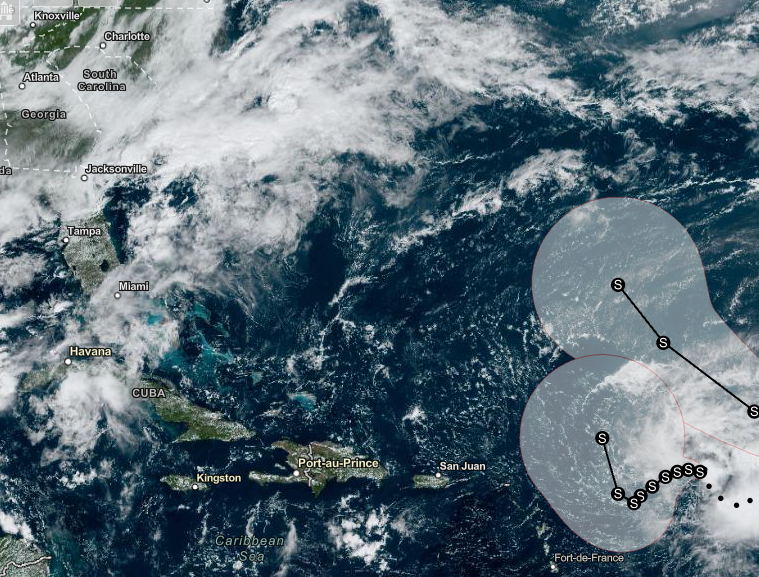Tropical Storm Philippe, which developed over the Atlantic Ocean earlier this week, has been projected to bring heavy rain and strong winds to the northeast Caribbean region. Initial weather forecasts surrounding the tropical storm suggested it was expected to hit the United States.
However, the Atlantic disturbance following Tropical Storm Ophelia may hit Cuba, the Dominican Republic, Jamaica, and Puerto Rico.
The National Hurricane Center (NHC) on Monday, September 25, first reported that Philippe had a maximum sustained wind of 50 miles per hour, while it is moving at a speed of 13 miles per hour, a forecast covered by Nature World News.
During its initial short-range weather outlook, the NHC said the Atlantic storm would traverse a path in the direction of Bermuda and the US East Coast. However, hostile breezes or wind shear have affected the structure of the storm.
Tropical Storm Philippe Update

Tropical Storm Philippe has the same maximum sustained wind compared earlier this week and moves at a west-northwestward patterns at 2 miles per hour, according to an NHC update as of 11:00 a.m. AST (local time) on Thursday, September 28. Although Philippe is still considered as a "tropical cyclone" by the US hurricane monitoring agency, it has slightly weakened in recent days.
According to AccuWeather, a wind shear has torn Philippe apart, causing it to traverse a different direction, warning that the tropical system now poses increased risks to land. The forecasters specify that the hostile breezes split the storm into half, with the upper part being blown off to the northeast direction while its lower part continues to move westward.
Also Read : Tropical Storm Ophelia Intensifies as it Moves Closer to NYC, NJ, Causing Storm Surge and Rip Tides
Tropical Storm Philippe Intensity
The AccuWeather forecast shows the wind shear will keep Tropical Storm Philippe's intensity below hurricane level, with wind speed ranging between 74 miles per hour and 110 miles per hour, in the next several days. Furthermore, Philippe is also expected to even weaken down to a tropical storm intensity at some point during the said period.
In the coming hours and days, Philippe is expected to bring not only heavy rain and strong winds across the northeast Caribbean, but also coastal flooding or erosion due to storm surges and large tidal waves.
Saffir-Simpson Hurricane Wind Scale
According to the National Weather Service (NWS) office in Miami, Florida, the strength or intensity of hurricanes are measures based on the Saffir-Simpson Hurricane Wind Scale, a 5-tier rating depending on a hurricane's sustained wind speed.
Tropical systems that reach a level of 3 out of 5 rating are classified as hurricanes, while higher levels are considered as major hurricanes due to their potential to inflict damage and result in significant loss of life, the NWS adds.
In late September 2022, a tropical depression developed into what was called Hurricane Ian, considered by many as the most deadly and destructive storm of the 2022 Atlantic hurricane season. Ian made landfall in western Cuba and Florida, which later became a deadly Category 5 hurricane, killing more than 100 people.
© 2025 NatureWorldNews.com All rights reserved. Do not reproduce without permission.





